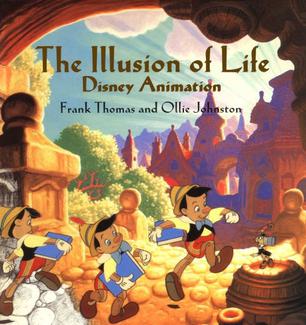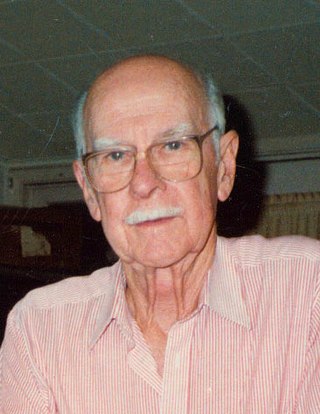
Animation is a filmmaking technique by which still images are manipulated to create moving images. In traditional animation, images are drawn or painted by hand on transparent celluloid sheets (cels) to be photographed and exhibited on film. Animation has been recognized as an artistic medium, specifically within the entertainment industry. Many animations are computer animations made with computer-generated imagery (CGI). Stop motion animation, in particular claymation, has continued to exist alongside these other forms.

Computer animation is the process used for digitally generating animations. The more general term computer-generated imagery (CGI) encompasses both static scenes and dynamic images, while computer animation only refers to moving images. Modern computer animation usually uses 3D computer graphics. The animation's target is sometimes the computer itself, while other times it is film.

One Hundred and One Dalmatians is a 1961 American animated adventure comedy film produced by Walt Disney Productions with distribution by Buena Vista Distribution. Based on Dodie Smith's 1956 novel The Hundred and One Dalmatians, the film was directed by Hamilton Luske, Clyde Geronimi, and Wolfgang Reitherman from a script by Bill Peet. With the voices of Rod Taylor, J. Pat O'Malley, Betty Lou Gerson, Martha Wentworth, Ben Wright, Cate Bauer, Dave Frankham, and Fred Worlock, the film's plot follows a litter of fifteen Dalmatian puppies, who are kidnapped by the obsessive socialite Cruella De Vil, wanting to make their fur into coats. Their parents, Pongo and Perdita, set out to save their puppies from Cruella, in the process rescuing eighty-four additional ones, bringing the total of Dalmatians to one hundred and one.
While the history of animation began much earlier, this article is concerned with the development of the medium after the emergence of celluloid film in 1888, as produced for theatrical screenings, television and (non-interactive) home entertainment.
Visual effects is the process by which imagery is created or manipulated outside the context of a live-action shot in filmmaking and video production. The integration of live-action footage and other live-action footage or CGI elements to create realistic imagery is called VFX.

Traditional animation is an animation technique in which each frame is drawn by hand. The technique was the dominant form of animation in cinema until the end of the 20th century, when there was a shift to computer animation in the industry, specifically 3D computer animation.

Franklin Rosborough Thomas was an American animator and pianist. He was one of Walt Disney's leading team of animators known as the Nine Old Men.

Squash and stretch is the phrase used to describe "by far the most important" of the 12 basic principles of animation, described in the book The Illusion of Life by Frank Thomas and Ollie Johnston.

Disney Animation: The Illusion of Life is a book by Frank Thomas and Ollie Johnston, two of the key animators at Disney during the Golden age of American animation.

Oliver Martin Johnston Jr. was an American motion picture animator. He was one of Disney's Nine Old Men, and the last surviving at the time of his death from natural causes. He was recognized by The Walt Disney Company with its Disney Legend Award in 1989. His work was recognized with the National Medal of Arts in 2005.
Character animation is a specialized area of the animation process, which involves bringing animated characters to life. The role of a character animator is analogous to that of a film or stage actor and character animators are often said to be "actors with a pencil". Character animators breathe life in their characters, creating the illusion of thought, emotion and personality. Character animation is often distinguished from creature animation, which involves bringing photorealistic animals and creatures to life.

Sleeping Beauty is a 1959 American animated musical fantasy film produced by Walt Disney Productions and released by Buena Vista Distribution. Based on Charles Perrault's 1697 fairy tale, the production was supervised by Clyde Geronimi, and was directed by Wolfgang Reitherman, Eric Larson, and Les Clark. With the voices of Mary Costa, Bill Shirley, Eleanor Audley, Verna Felton, Barbara Luddy, Barbara Jo Allen, Taylor Holmes, and Bill Thompson, the film follows Princess Aurora, who was cursed by the evil fairy Maleficent to die from a prick from the spindle of a spinning wheel. She is saved by three good fairies, who alter the curse so that the princess falls into a deep sleep and is awakened by true love's kiss.

Randy Cartwright is an American animator.

Kenneth B. "Ken" Anderson was an American animator, art director, layout artist, and storyboard artist at Walt Disney Animation Studios for 44 years. He had been named by Walt Disney as his "jack of all trades".

Frank and Ollie is a 1995 documentary film about the life and careers of Frank Thomas and Ollie Johnston, two chief animators who had worked at Walt Disney Animation Studios from its early years until their retirement in the late 1970s.

William Norman Ferguson was an animator for Walt Disney Studios and a central contributor to the studio's stylistic development in the 1930s. He is most frequently noted for his contribution to the creation of Pluto, one of the studio's best-known and most enduring characters, and is the artist most closely associated with that character. He is also credited for developing Peg-Leg Pete and the Big Bad Wolf. Ferguson, known at the studio as "Norm" or "Fergy", was the primary animator of the witch in Snow White and the Seven Dwarfs, the first in a long line of great Disney feature villains. He was also a sequence director on the film.

Disney's twelve basic principles of animation were introduced by the Disney animators Ollie Johnston and Frank Thomas in their 1981 book The Illusion of Life: Disney Animation. The principles are based on the work of Disney animators from the 1930s onwards, in their quest to produce more realistic animation. The main purpose of these principles was to produce an illusion that cartoon characters adhered to the basic laws of physics, but they also dealt with more abstract issues, such as emotional timing and character appeal.

Disney's Nine Old Men were Walt Disney Productions' core animators, some of whom later became directors, who created some of Disney's most popular animated movies from Snow White and the Seven Dwarfs to The Rescuers, and were referred to as such by Walt Disney himself. They worked in both short and feature films. Disney delegated more and more tasks to them in the animation department in the 1950s when their interests expanded, and diversified their scope. Eric Larson was the last to retire from Disney, after his role as animation consultant on The Great Mouse Detective in 1986. All nine members of the group were acknowledged as Disney Legends in 1989 and all would receive the Winsor McCay Award for their lifetime or career contributions to the art of animation.

Anticipation is one of the fundamental 12 basic principles of animation, as set out by Frank Thomas and Ollie Johnston in their authoritative 1981 book on the Disney Studio titled The Illusion of Life. An anticipation pose or drawing is a preparation for the main action of an animated scene, as distinct from the action and the reaction.
Straight ahead is a term used in animation that refers to a method that uses only the first key pose of a character, and then continues drawing the character to create the desired motion. It was first referred to in the 1981 book by Ollie Johnson and Frank Thomas The Illusion of Life, and is a part of the 12 Basic Principles of Animation. It contrasts with its converse, pose to pose animation, in that it does not use inbetweening. Straight ahead action is so named because the animator literally works straight ahead from the first drawing of the scene. Disney director-animator Woolie Reitherman said, "When I didn't know what I was doing in an action, I always went straight-ahead. I'd just start on ones. Half the time I didn't know what I was doing. To me, it's fun. You find out something you wouldn't have found out otherwise."